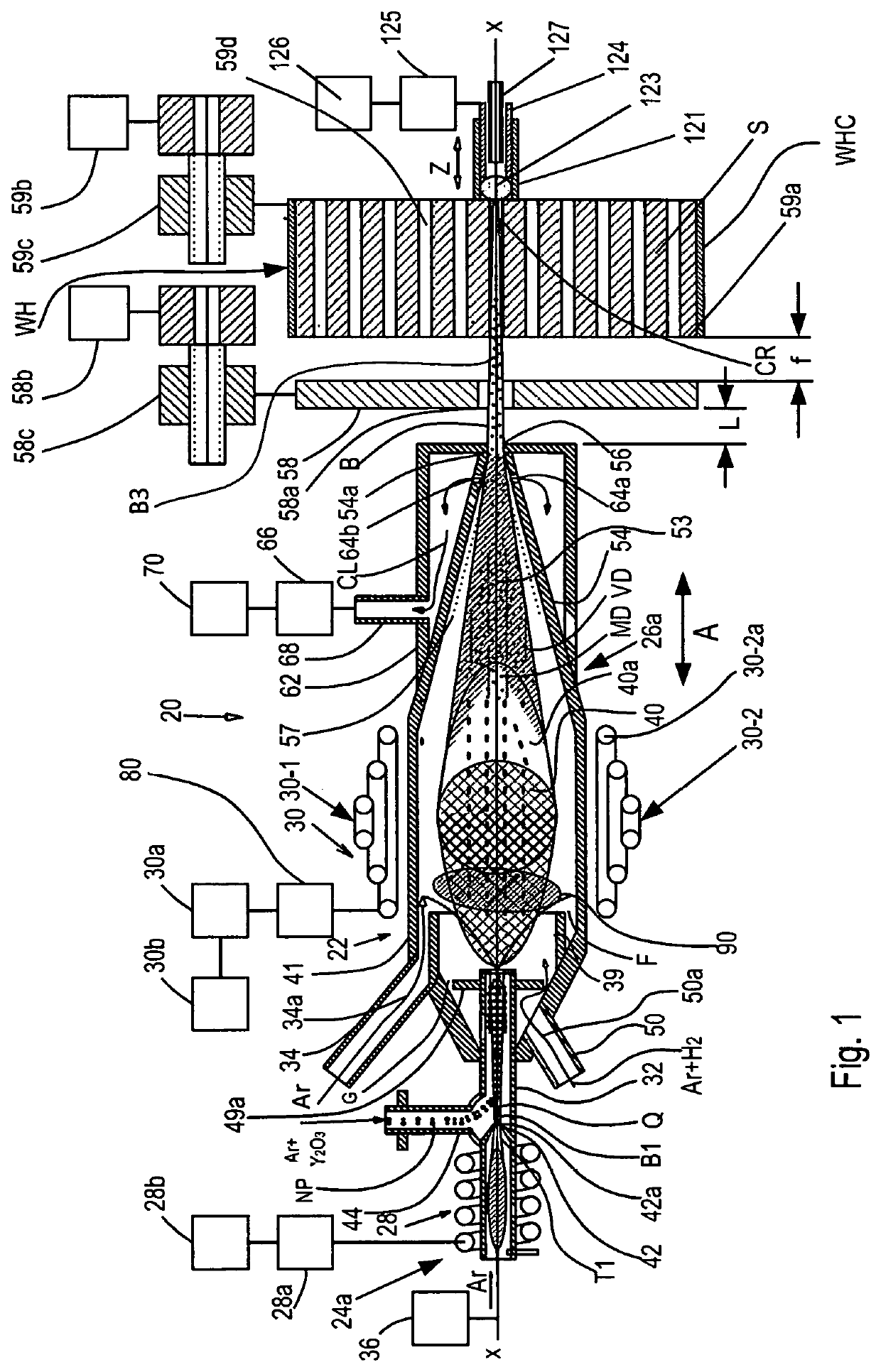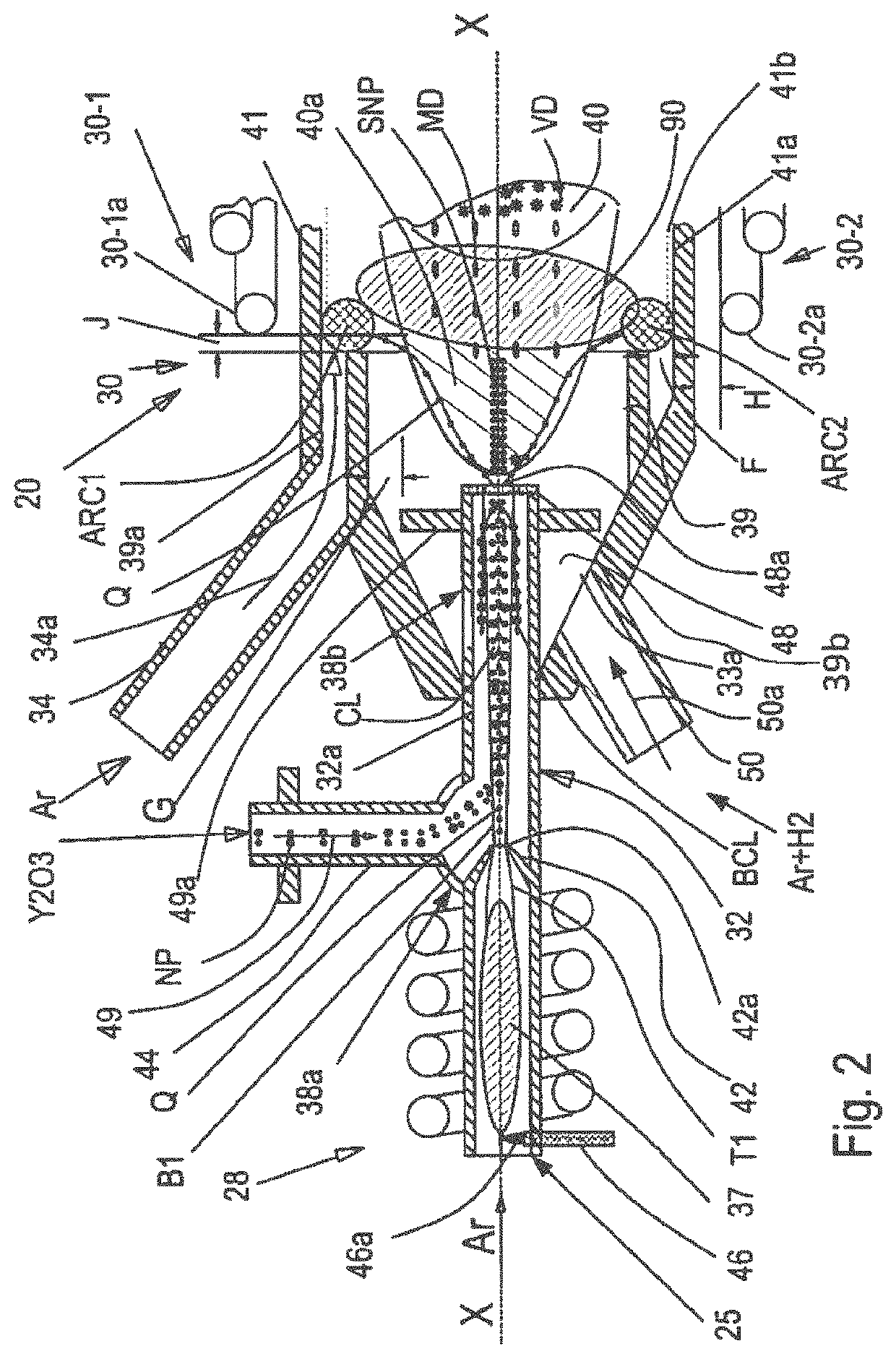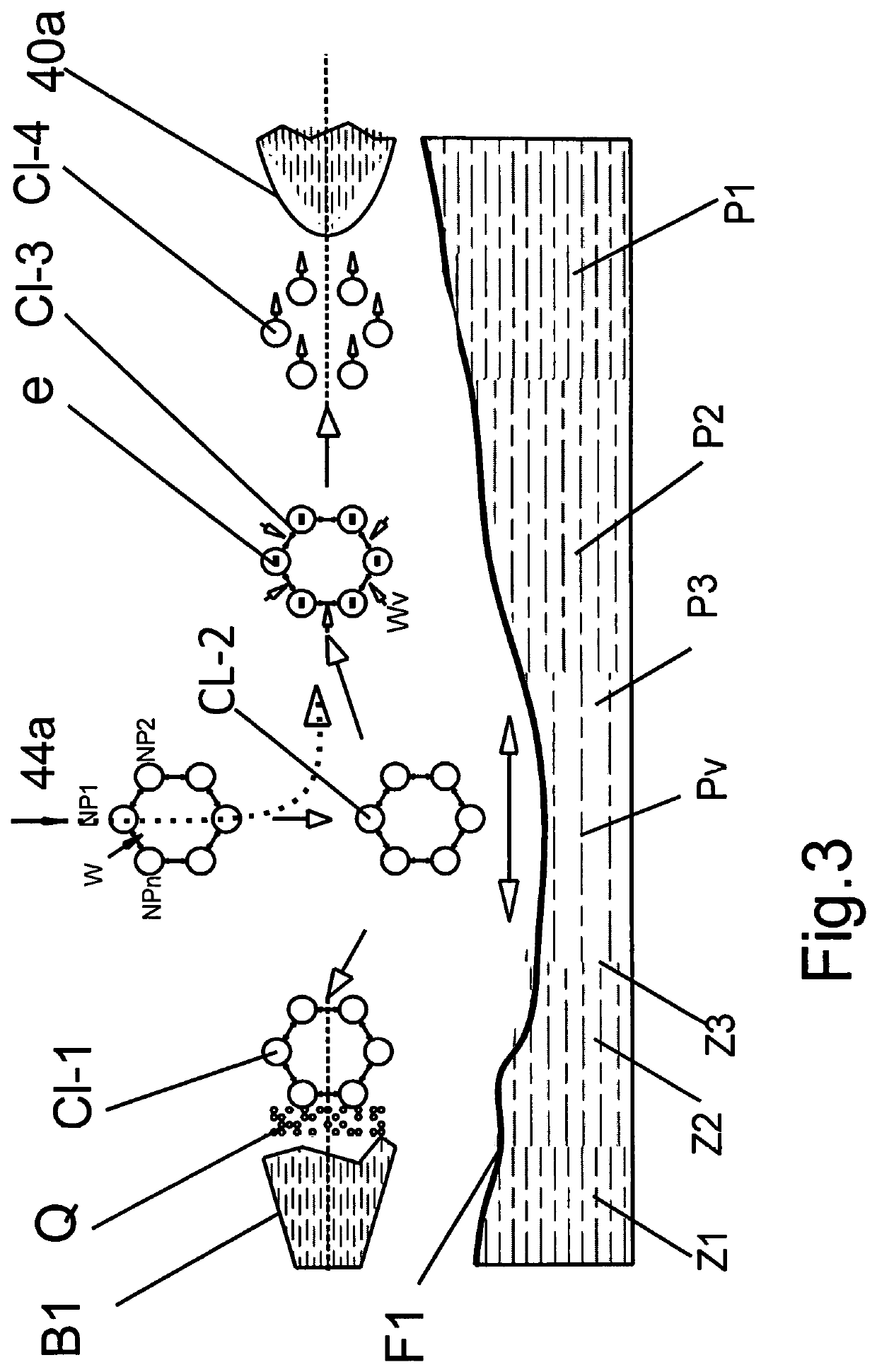3D printing apparatus using a beam of an atmospheric pressure inductively coupled plasma generator
a technology of inductively coupled plasma and 3d printing, applied in the field of additive manufacturing, can solve the problems of affecting the commercialization of additive manufacturing, the instrument for implementing such nanoparticles in the 3d manufacturing process has not yet been developed, and the protective layer cannot be easily covered. it can achieve the effects of enhancing thermal characteristics, reducing the diameter of nanoparticles, and increasing the surface energy density
- Summary
- Abstract
- Description
- Claims
- Application Information
AI Technical Summary
Benefits of technology
Problems solved by technology
Method used
Image
Examples
Embodiment Construction
[0057]The present invention relates to the field of additive manufacturing. More specifically, the present invention relates to a 3D printing apparatus using nanoparticles as a building material for 3D objects and an atmospheric-pressure inductively coupled plasma (hereinafter ICP) generator of a plasma beam with appropriate devices for vaporizing, atomizing and forming precursor particles into a plasma beam focused onto an object being treated. The invention also relates to a method of 3D printing by using the 3D printing apparatus of the invention.
[0058]FIG. 1 is a longitudinal sectional view of an atmospheric-pressure inductively coupled plasma-beam generator (hereinafter referred to as a “plasma generator” or “ICP generator”) used in the 3D printer of the invention. As can be seen from FIG. 1, the plasma beam generator, which in an assembled form is designated by reference numeral 20, consists of two parts, i.e., a top plasma beam generator and a bottom plasma beam generator, an...
PUM
| Property | Measurement | Unit |
|---|---|---|
| diameter | aaaaa | aaaaa |
| depth | aaaaa | aaaaa |
| diameter | aaaaa | aaaaa |
Abstract
Description
Claims
Application Information
 Login to View More
Login to View More - R&D
- Intellectual Property
- Life Sciences
- Materials
- Tech Scout
- Unparalleled Data Quality
- Higher Quality Content
- 60% Fewer Hallucinations
Browse by: Latest US Patents, China's latest patents, Technical Efficacy Thesaurus, Application Domain, Technology Topic, Popular Technical Reports.
© 2025 PatSnap. All rights reserved.Legal|Privacy policy|Modern Slavery Act Transparency Statement|Sitemap|About US| Contact US: help@patsnap.com



